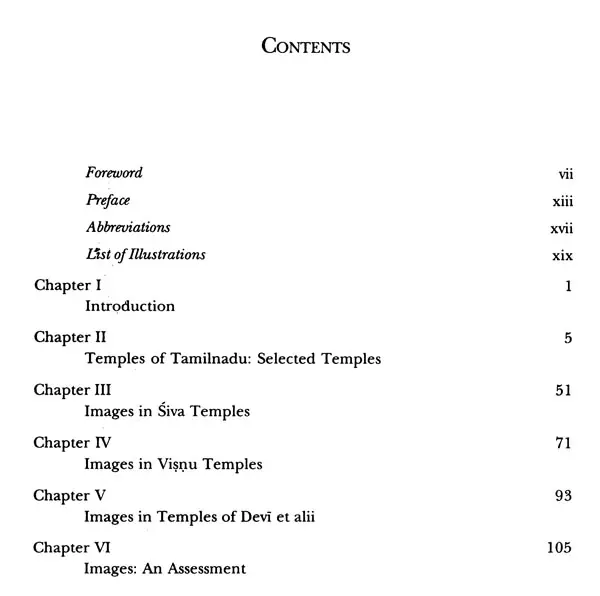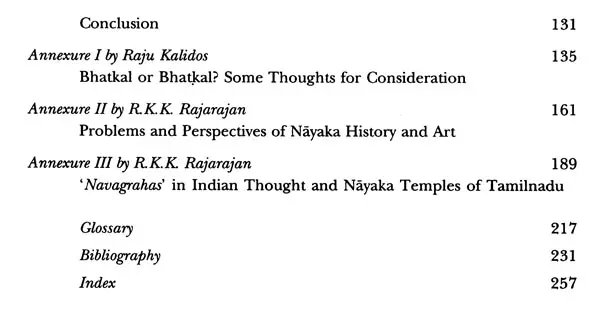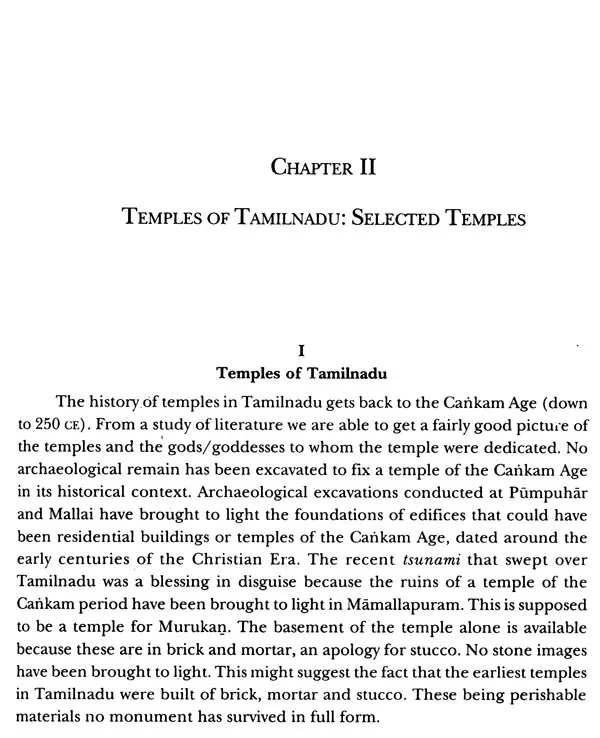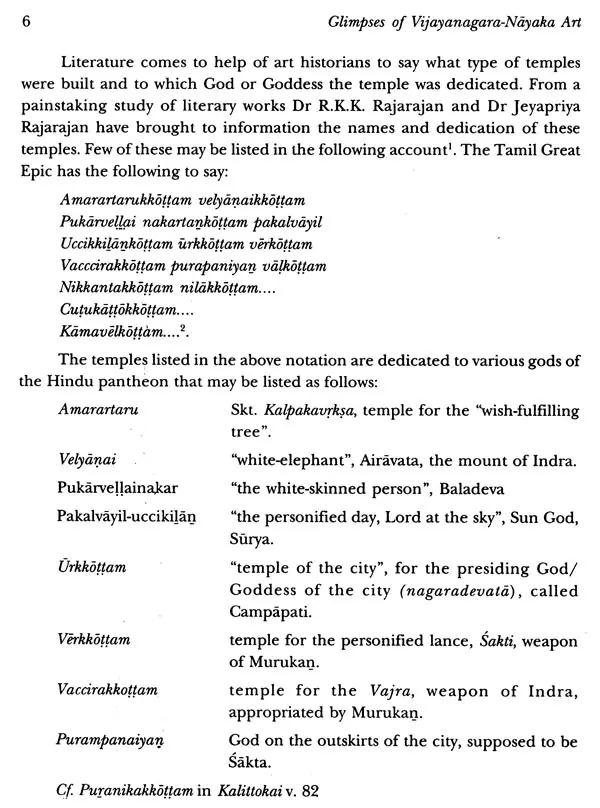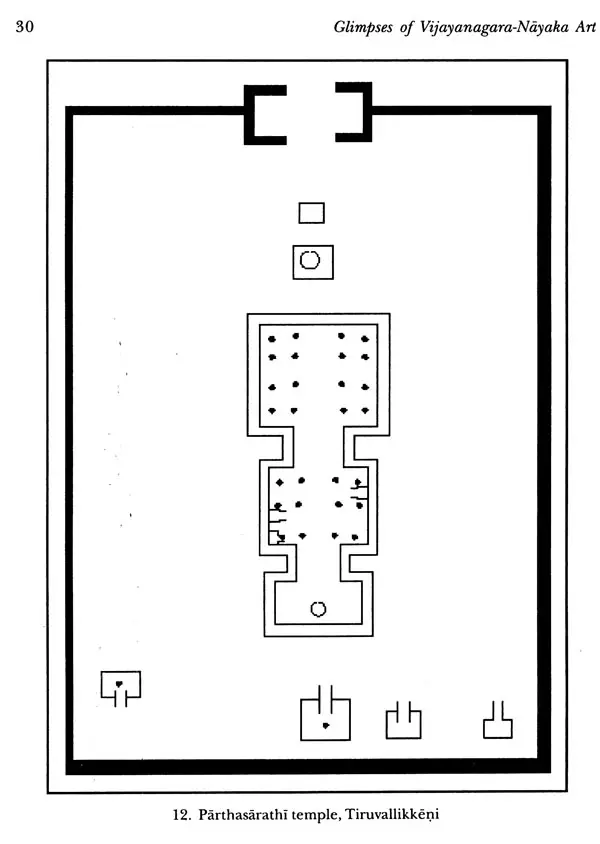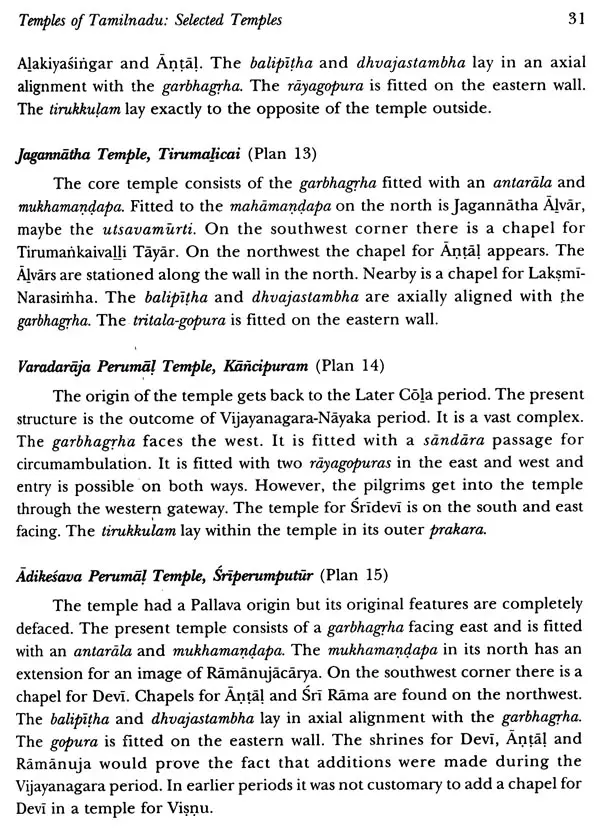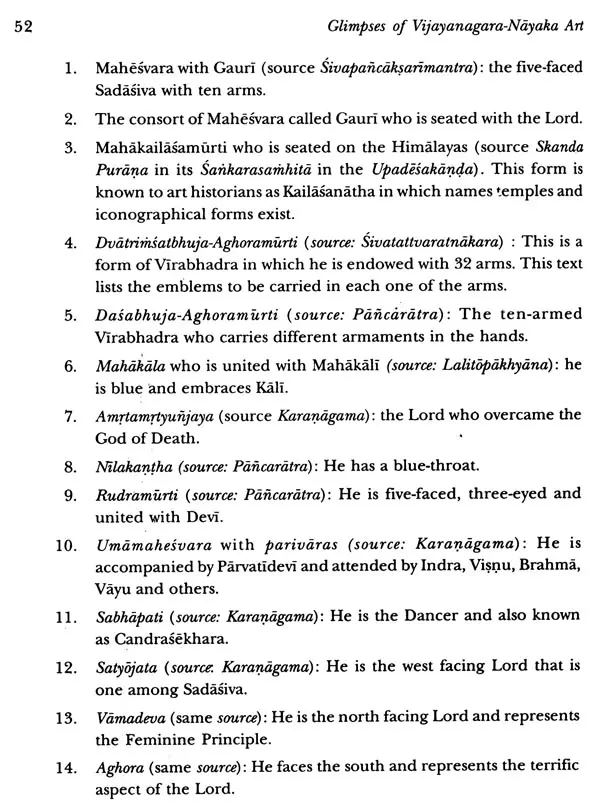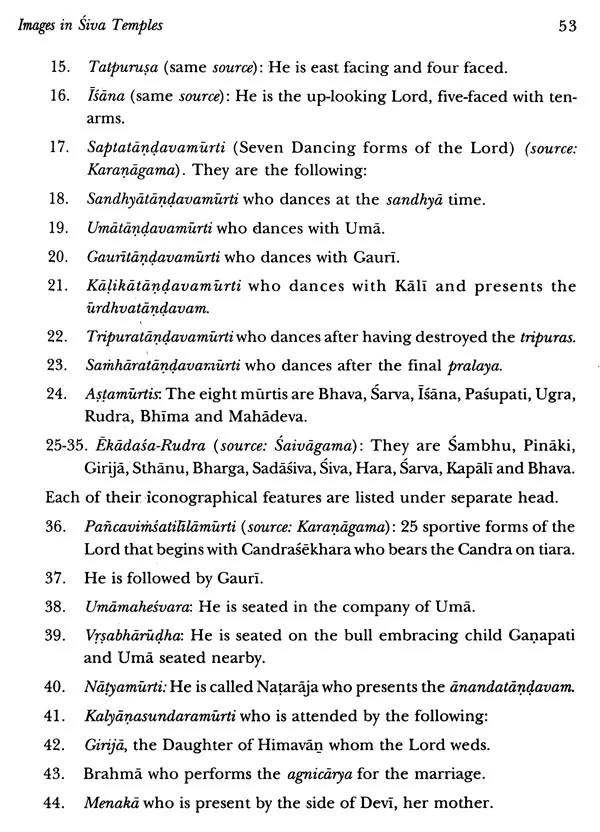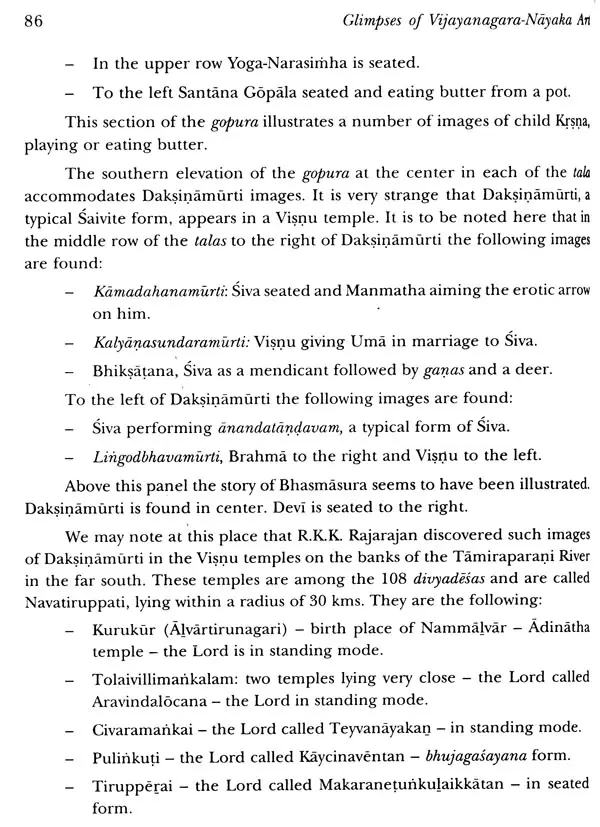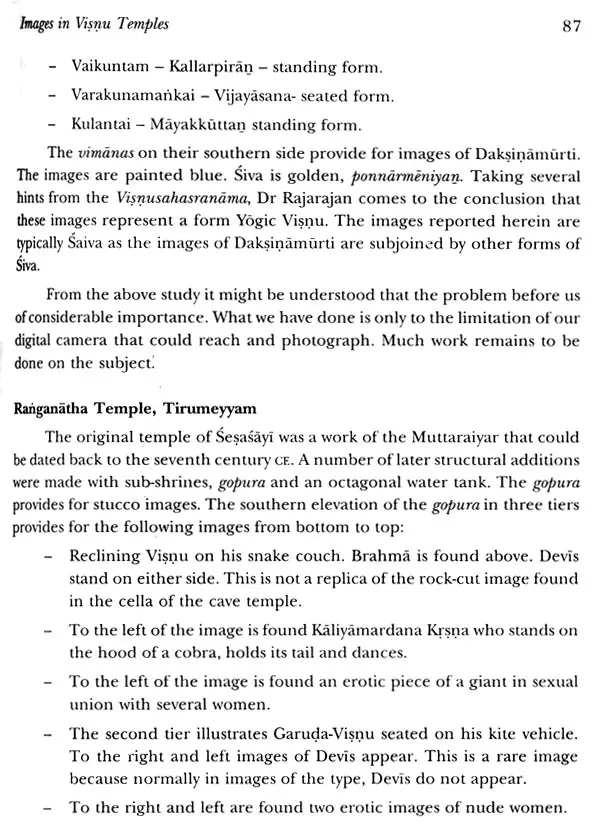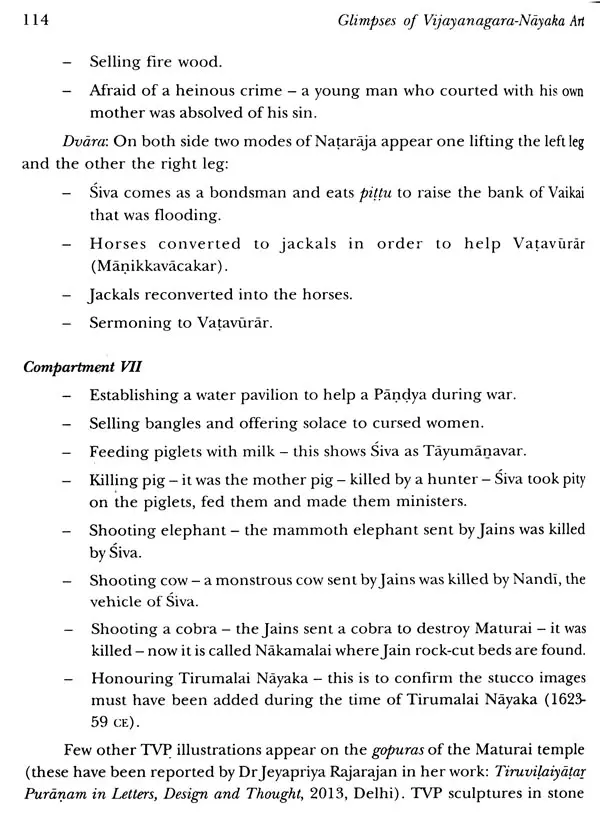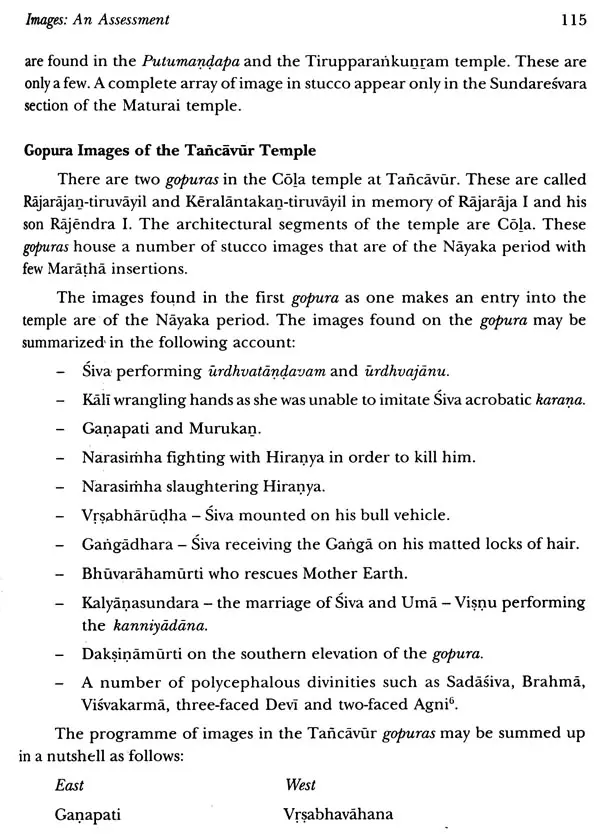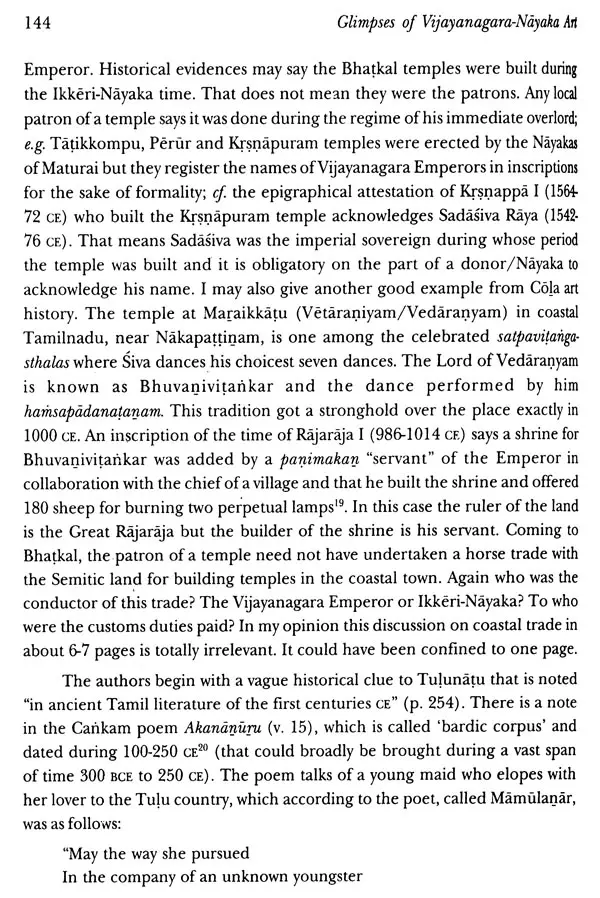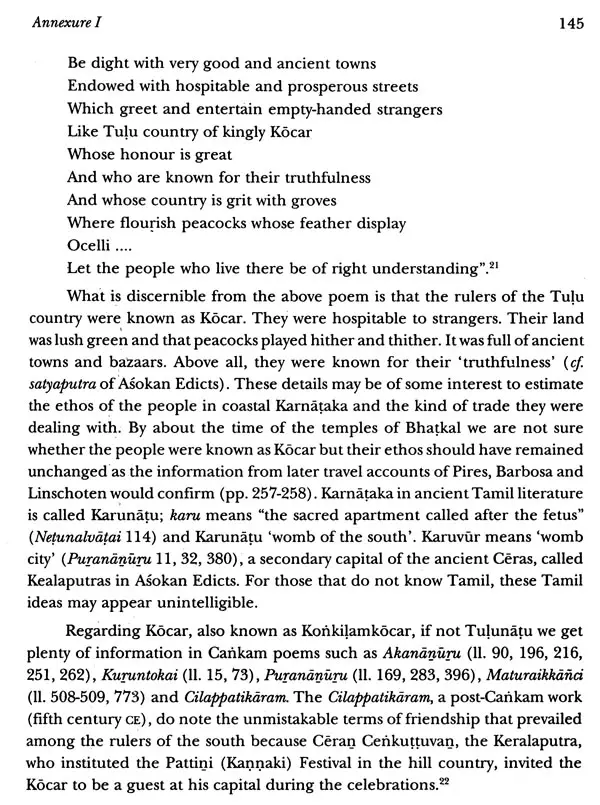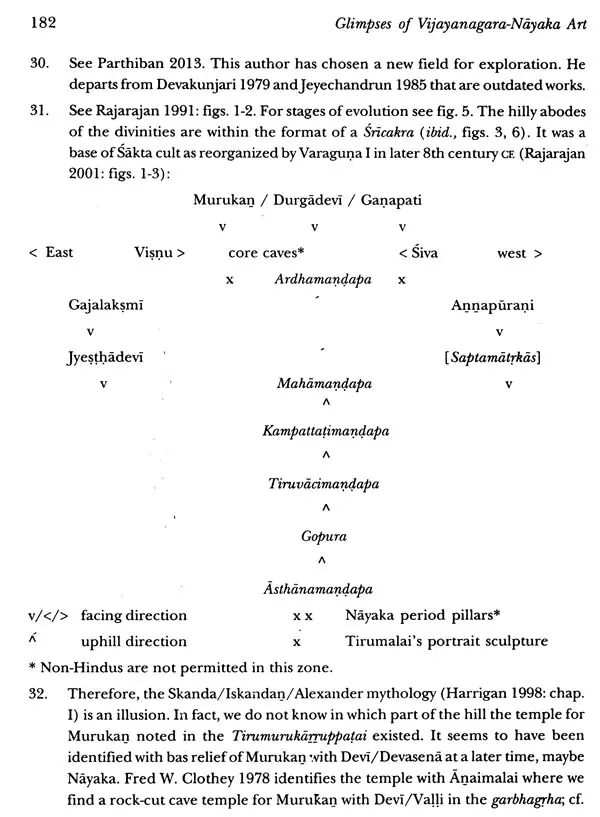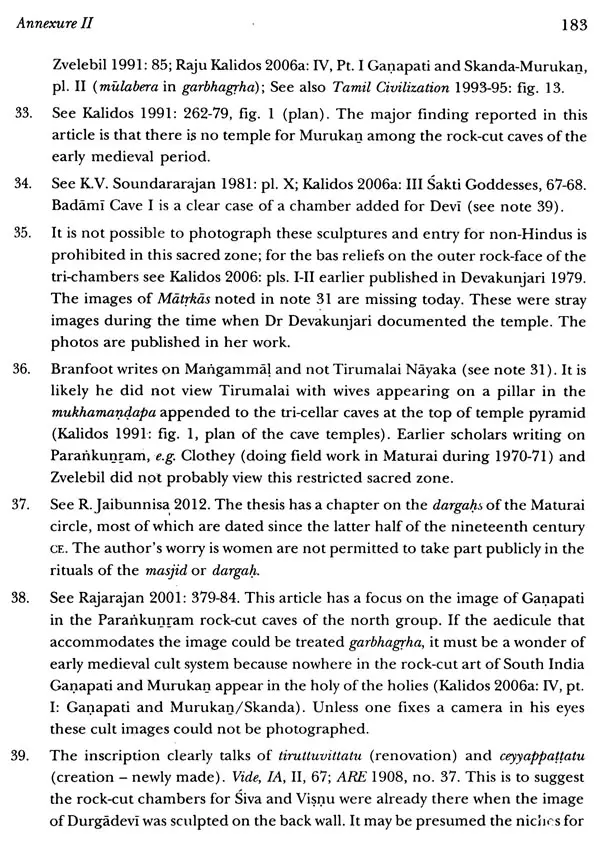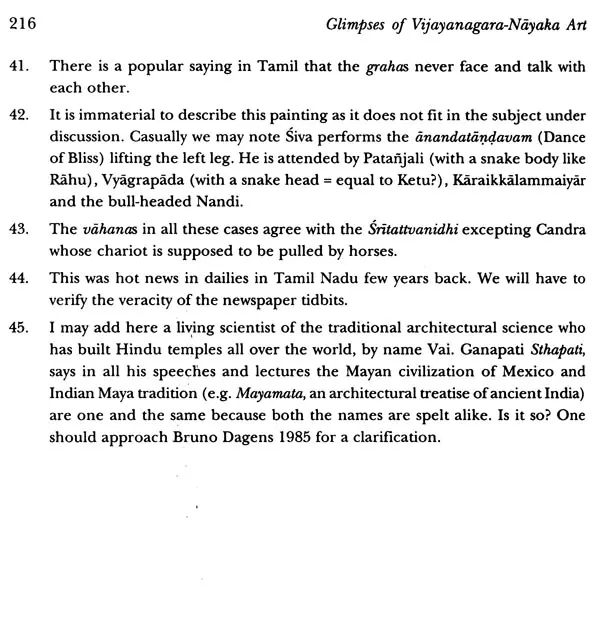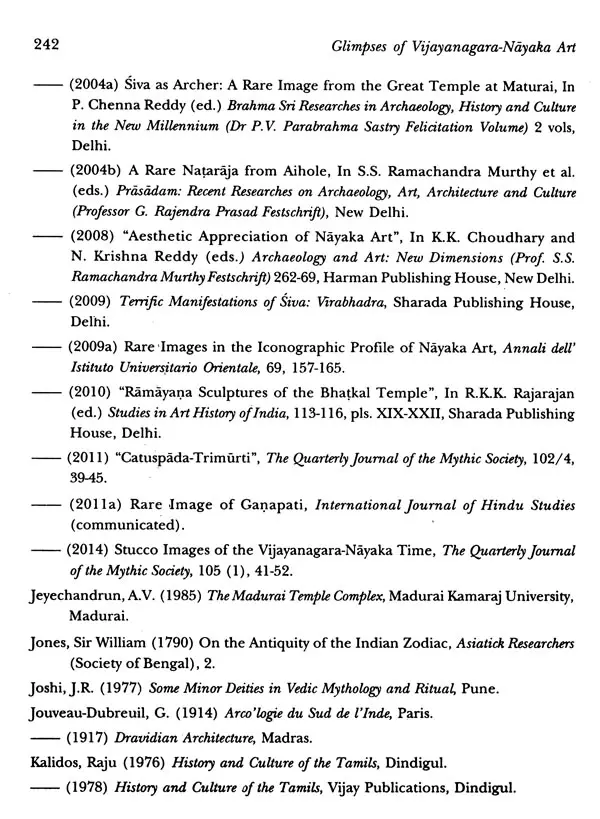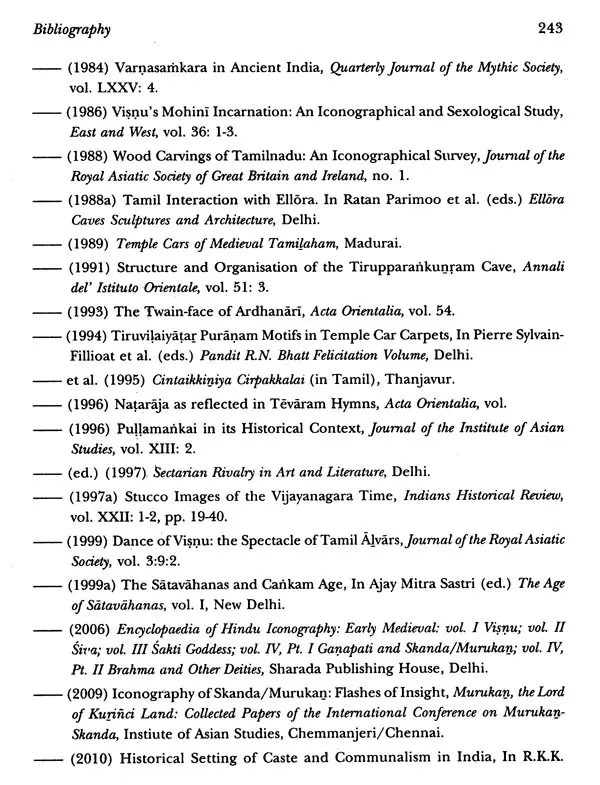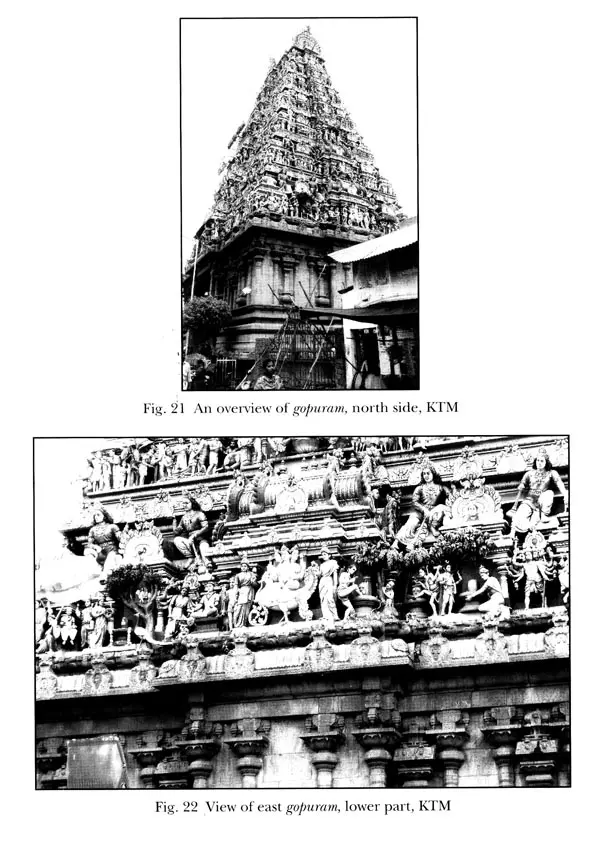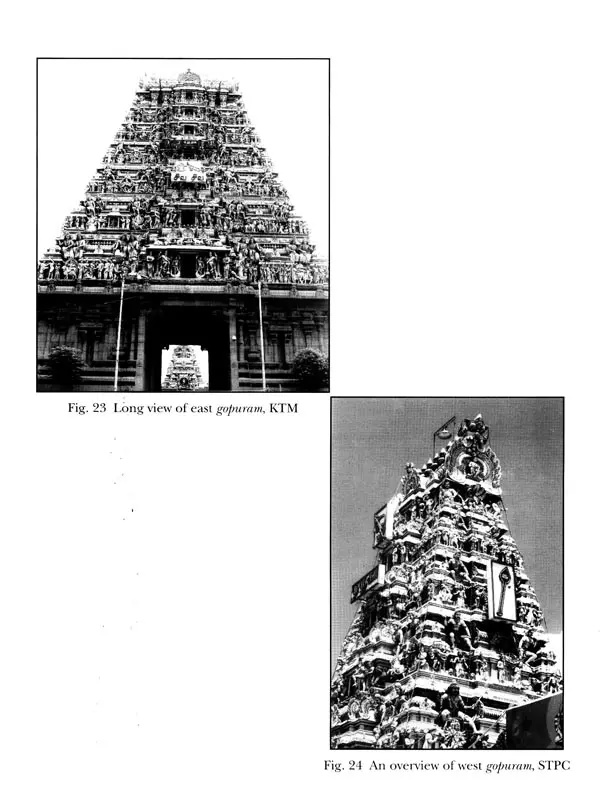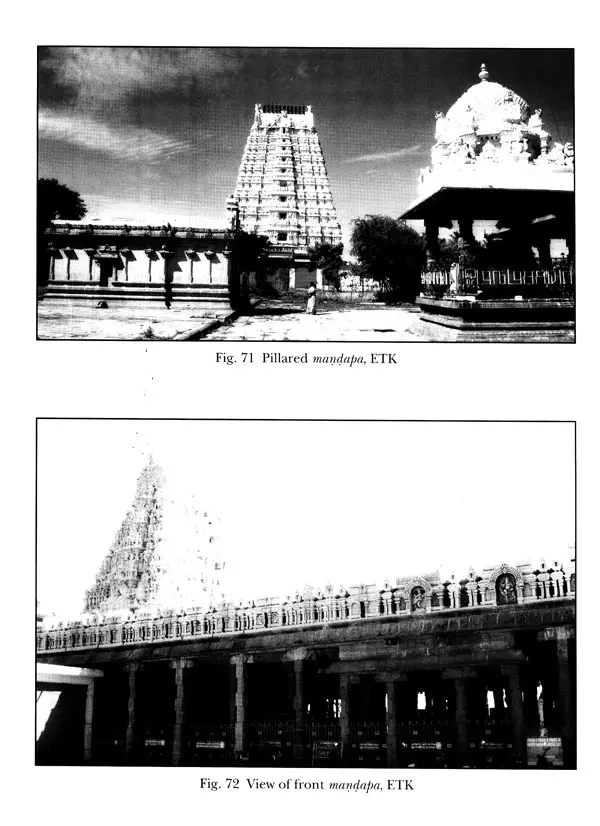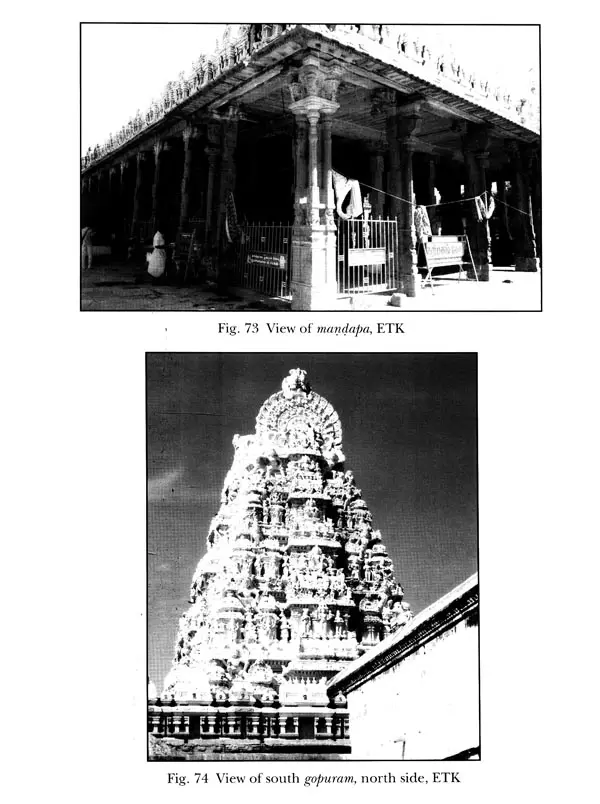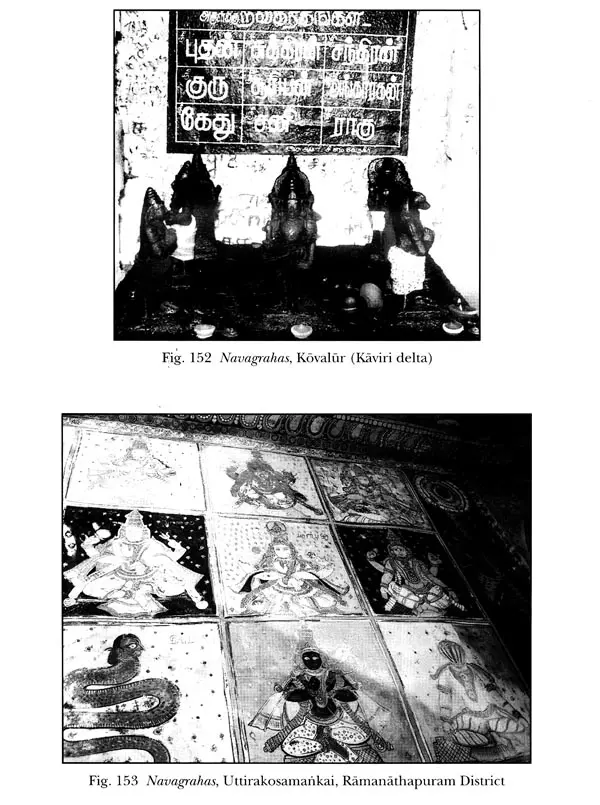
Glimpses of Vijayanagara-Nayaka Art
Book Specification
| Item Code: | UAE558 |
| Author: | J. Soundararajan |
| Publisher: | Sharada Publishing House, Delhi |
| Language: | English |
| Edition: | 2015 |
| ISBN: | 9789383221097 |
| Pages: | 360 (Throughout B/w Illustrations) |
| Cover: | HARDCOVER |
| Other Details | 10.00 X 7.50 inch |
| Weight | 1.05 kg |
Book Description
The book is in six chapters, covering the following aspects: introduction of the images and temples, list of the temples selected, iconography in Siva temples, iconography in Visnu temples, iconography of Devi, assessment of images and at the end conclusion.
Prof. R
He is member of many professional historical societies, like Indian History Congress, South Indian History Congress, Indian Art History Congress, Tamil Nadu History Congress, Tamil Nadu Archaeological Society, Epigraphically Society and Place name Society of India. He has two books and 31 research articles in scholarly international, national journals in his credit. His contribution to Journals like East and West and 23rd IAHA, Aloe Setar, Malaysia also adds feather to his cap. He has visited Indonesia, Singapore and Malaysia for international conferences.
Nayaka was "Nayak" in the exploring works for. Rangacharya 1914-16 in Indian Antiquary, R. Sathyanath air (some spell Aiyar) 1924 (Madura), C.S. Srinivasachari 1943 (Gingee) and V. Vridhagirisan 1942 (Tanjore). These outdated spellings have been remolded in the meant order by scholars of the Tamil University who worked on the various facets of Nayaka history and art in more than half-a-dozen doctoral dissertations (Jeyapriya Rajarajan - Virabhadra [published], A. Karkuzhali-'Kaviri Delta' [in press], M. Ragunath - 'Natunatu' [published], R. Radhakrishnan - Region', N. Alamelu - 'Narrative Sculptures', K. Latha ='Saptavitanga-sthalas", K. Sumathi - 'Astavirattanarns' and so on). They deployed scientific spellings according to the Tamil Lexicon such as Nayaka, Maturai, Taficavur, Cenci, Arkatu, Velur, Bhatkal and so on. With the advancement of technology in the usage of scientific terms one is expected to be abreast with the latest trends and approach a researchable problem. In an age when man is heading toward the Saturn in spaceship some scholars are primitive handling paleo-spellings; e.g.
'Perumbanarruppadai' that should be and 'Alagarkoyil' Alakakoyil; "Thirumalisai' Tirumalicai, "Thiruvenkatam ' Tiruvenkatarn, 'Kulottunga' Kulottungajkan, 'Cola' Cola (Nagaswamy 2012: passim, pp. 1, 8, 12, 19, 248, 55, 243). The sarcastic Tamil proverb is:
"Majestic coiffure with flowers of fragrant screw-pine; inside are found lice and louse". These experts should read Tiruvayandi (62.7).
It is disheartening to note that some claim to have studied Tamil, obtain sumptuous grants from the UK and the USA and follow time-old discarded methods in research and they talk of the "methodology for Nayaka art history".
It is funny to find them write in Journals that have established reputation during the past century and spoil, themselves and the journal's name. These half- cooked scholars do their level best to butcher the excellence earned by these reputed Journals; the editors/referees standing behind the curtain. Journals such as the Artibus Asiae (vols. 60/2, 2000, 197-22; 65/2, .2005, pp. 253-308 [see Annexure]), Ars Oriental sand Bulletin of the School of Oriental African Studies (vol. 71/1,2013, pp. 21-47) now stand on crossroad. The Elizabethan Golden Age of scholarship is gone and that of falsehood, little Elizabeth’s has succeeded in the helm of academic journalism. I remember the melancholic words of Edmund Burke in Reflections ~n the French Revolution: "But the age of chivalry is gone. That of sophistry, economists and calculators, has succeeded; and the glory of Europe is extinguished forever". What can we do if one is heading toward a catastrophe?
"0 judgment thou art fled to brutish beasts And men have lost. their reason! Bear with me."
Earlier Prof. Raju Kalidos did his PhD. (1981) on the wood-carved temple cars of Tamilnadu, another neglected field in art history (published with ICHR assistance Madurai 1989). As a student of Prof. Raju Kalidos, I took his advice and selected the present topic for a major UGC project. He was with me since the preparation of the proposal to the present report writing. I am deeply beholden to my teacher in this regard.
The stucco images of Tamilnadu that mostly appear in the temples of the south have not formed the subject-matter for an exclusive study. Prof. S. Settar writing on Hampi, a forgotten metropolis, was the first to report several stucco images on the gopuras of the Vijayanagara/Hampi temples. But the learned professor did not go deep into the subject mainly due to the limitations of the study. Earlier, Prof. S. Rajasekhara of the Karnatak University, Dharwad did a work on Masterpieces of Vijayanagara Art. This work also shed light on stucco images but did not go deep with the description of the monuments. In that respect the monograph (doctoral thesis) by Dr R.K.K. Rajarajan is significant because it is the only work that presents a consolidated picture of stucco images in the Nayaka temples studied by him for zones of Maturai, Tancavur, Cenci and Keladi-Ikkeri. He also published an article on the subject in an International Journal from England, South Asian Studies. Currently, another article by the same scholar is being published by the Rutledge. It deals with some Saivite motifs (e.g. Daksinamurti) found on the vimanas in Visnu temples of the Far South, called Navatiruppati, in the Tirunelveli sector. His collections were random.
The present study undertaken a systematic survey of stucco monuments from Chennai in the north to Maturai in the south. I have cogently arranged all these images in the different chapters planned for the present work. A list of temples visited by fieldwork has been given in the following chapter.
'The media for sculptural work are stone, metal, brick, wood, mud, stucco, ivory, painting, vegetable wax and wax (artificial?). These ten are the basic materials for sculptural work".
It seems these raw materials were used to make image of the gods, known in Indian tradition as Citra that stands for both sculpture and painting. An exclusive term for sculpture is vigraha that could be in stone or metal. When we say in the Indian context it is mostly bronze. There may also be sculptures in other expensive metals such as gold or silver. However, the common media employed in Indian art for architectural and iconographic work was wood or stone.
The primitive man must have depended on easily procurable materials for building his houses such as bamboo, thatch and wood. When he came to realize there is an Ultimate Reality that is called God, he recognized the natural forces as gods; e.g. fire (Agni), wind (Vayu), earth (Bhudevi), water or sea (Nadidevatas and Samudraraja), sun (Surya), moon (Candra) and so on.
In the Hindu religion Siva or Visnu is viewed in light form, jyotisvaritpa. A mythology to this effect evolved in Saivism. It is said once Brahma and Visnu quarreled among them as who is the Supreme God. Siva appeared on that occasion .and wanted to prove them he was supreme. He told them he who could touh his crest or feet is the Supreme God. Saying this Siva rose up in the form of an inaccessible fire-phallus (Tejas- Lingaor Agni- Lingal). Brahma moved up in the form of a swan thamsa 'swan' is his vehicle) to find out the crest of. Siva. Visnu assumed his Varaha-avatara (Boar incarnation) and dug below the earth to find out the feet of Siva that buried underneath the earth.
Brahma was flying up for aeons together and yet he could not find out even the shoulder of Siva. Visnu went below the earth for aeons together and could not even reach the knee of Siva. Finally, it was proved Siva was the supreme God. This mythology is elaborated in the Linga Purana and other Saiva puranas’.
These would show the fact that the earliest God known to man is nature, either fire or water, sun or moon that gave him light to come out from darkness or the nourishing water to drink. The Cilappatikaram, a Tamil epic exalts the forces of nature, equal to the gods.
"Let the moon be exalted, the moon is exalted ... .let the sun is exalted, the sun be exalted".
Book's Contents and Sample Pages
